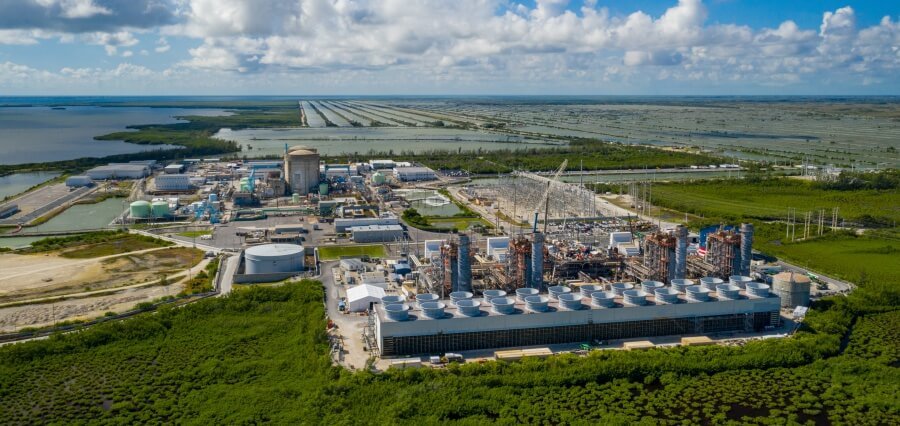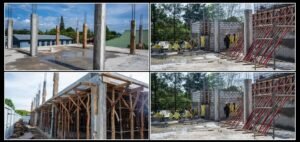Nuclear is a clean energy source with no emissions generated in nuclear power plants. Fission, the mechanism by which uranium atoms split to produce energy, is how it produces power. Without the toxic consequences of fossil fuels, energy is produced by using the heat released by fission to create steam that turns a turbine. Nuclear energy has a lower life cycle carbon footprint and is far safer than renewable energy sources like solar and wind. The group of researchers who developed the first self-sustaining nuclear chain reaction was led by the Italian physicist Enrico Fermi. About 30% of all nuclear electricity produced worldwide is produced in the United States, making it the world’s greatest generator of nuclear energy.
Let’s Explore in detail about the nuclear power plants in Florida
Nuclear energy is being used in more than half of the country’s states to assist reduce the carbon intensity of the electrical supply and fulfil the growing demand for energy. The pattern for building nuclear power facilities is in Florida, the country’s second-largest electricity generator. The Atlantic coast is home to Florida’s two main nuclear power reactors, which account for 11.5% of the state’s total energy production. Remarkably, nuclear power provides 75% of the state’s carbon-free electricity.
1) Crystal River Energy Complex
One of the biggest coal and natural gas-fired power plants in the US is the Crystal River Energy Complex, which is located close to the Crystal River in Florida. It is made up of seven power plants that cover more than 4700 acres. With an astounding 3,449 megawatts of total capacity, this power plant, which is owned by Duke Energy, provides electricity to more than 2 million residences in Florida.
2) St. Lucie Nuclear Power Plant
One of Florida’s oldest nuclear power plants, the St. Lucie Nuclear Power Plant is located on Hutchinson Island and has been providing nuclear power to many homes for more than 45 years. Unit 1 and Unit 2, its two pressurized water reactors, went into service in 1976 and 1983, respectively. This plant stands out due to its unusual island position, which provides some degree of protection from natural calamities.
3) Turkey Point Nuclear Generating Station
The Turkey Point Nuclear Generating Station, the biggest nuclear power station in Florida and the eleventh largest in the country, is located in Homestead. The facility, which is owned and run by Florida Power and Light (FPL), features two nuclear reactors that are in operation. Pressurized water reactors Unit 3 and Unit 4 began commercial operations in 1972 and 1973, respectively. With a combined capacity of about 1,800 megawatts, these reactors could provide nuclear power to about a million households. This makes it one of the prominent nuclear power plants in Florida.
There are just two operational nuclear power plants in the state, and they are both in South Florida: Turkey Point Nuclear Plant in Biscayne Bay and St. Lucie Nuclear Plant near Jensen Beach. Another decommissioning site in the state is Crystal River, which closed in 2013 due to deterioration. Two nuclear facilities currently in operation provide 11.5% of Florida’s total energy production, demonstrating the state’s heavy reliance on nuclear power plants. A staggering 75% of Florida’s carbon-free electricity comes from these plants, which include the St. Lucie Nuclear Power Plants and the Turkey Point Nuclear Generating Station.
The Turkey Point Nuclear Generating Station, the biggest nuclear power station in Florida and the eleventh largest in the country, is located in Homestead. The facility, which is owned and run by Florida Power and Light (FPL), features two nuclear reactors that are in operation. The Florida House estimates that Florida’s two surviving active sites supply about 13% of the state’s electricity. Florida Electric Power Coordinating Group Board Chair Jacob Williams stated, “We are a thousand miles away from any coal in Florida, and the cost of that doesn’t make good economics.”
After Governor Ron DeSantis signed legislation earlier this year directing the investigation, nuclear energy received a second look Thursday during a conference in Tallahassee that included executives and experts from the electric business as well as staff members of the Florida Public Service Commission.
In April 2025, the panel is required to present a research report to the Florida Legislature, which will be carried out in collaboration with the Department of Emergency Management and the Department of Environmental Protection. Public feedback will also be considered by the panel.
Cayce Hinton, director of the Office of Industry Development and Market Analysis, stated, “We just want to produce this report and give it to the Legislature with any recommendations that we may come up with for how we can increase the use of advanced nuclear in the state.”This may include increasing the number of nuclear power plants as well.
Details, including potential locations, have not yet been disclosed by the panel. Nonetheless, the state is taking into account a number of nuclear options, including standard nuclear power plants, mobile nuclear power devices like micro-reactors or small modular reactors, as well as reactors of both large and small scale.








